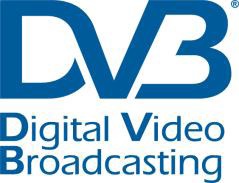 Digital Video Broadcasting (DVB) announced that the industry consortium’s steering board has approved version 1.3 of its Globally Executable MHP (GEM) specification.
Digital Video Broadcasting (DVB) announced that the industry consortium’s steering board has approved version 1.3 of its Globally Executable MHP (GEM) specification.
For more information visit: www.dvb.org
Unedited press release follows:
GEM v1.3 APPROVED
Latest Version Of Gem Targets
OTT & Hybrid Broadcast/Broadband Services.
Geneva – 02 March 2011 – At the 67th Meeting of the Steering Board, the DVB approved the latest version of its specification for interactivity – Globally Executable MHP (GEM). This new version of GEM v1.3 prepared by the ad-hoc group TM-MUG, chaired by Michael Lagally (Oracle), now provides support for Over-The-Top (OTT) television and Hybrid Broadcast/Broadband (HBB).
This new version of the Java based GEM specification defines an OTT device category (target), which addresses media distribution over broadband networks without guaranteed bandwidth such as the Internet. The OTT target complements the existing GEM targets for Broadcast, Packaged Media and IPTV.
The OTT target offers new APIs to address particular OTT scenarios for content streaming and download and can be used for adaptive streaming deployments. For hybrid broadcast/broadband deployments GEM 1.3 offers API enhancements to synchronise media content over different networks. This feature can be used to offer, for example, additional subtitle languages or audio tracks for broadcast content.
The following diagram shows the relationship of the different targets:
The specification is used by entities writing receiver specifications and/or standards based on GEM, and for developers of applications that use the GEM functionality and APIs. The GEM specification aims to ensure interoperability between GEM applications and different implementations of platforms supporting GEM applications. This includes interoperability across different middleware specifications, i.e., MHP, Blu-ray, OCAP, ACAP, ARIB, and the Open IPTV Forum’s Procedural Application Gateway.
GEM v1.3 addresses current business models for delivery of DVB and other Multimedia services via broadband IP networks. It offers a field proven robust and secure execution environment based on Java that can run multiple concurrent applications under different privilege levels.
“This extension to the standard offers great potential to create advanced hybrid broadcast/broadband and over-the-top services,” commented Peter Siebert, Executive Director, DVB.
About DVB
Digital Video Broadcasting (DVB) is an industry-led consortium of over 250 broadcasters, manufacturers, network operators, software developers, regulatory bodies and others committed to designing global standards for the delivery of digital television and data services. DVB standards cover all aspects of digital television from transmission through interfacing, conditional access and interactivity for digital video, audio and data. The consortium came together in 1993 to create unity in the move towards global standardisation, interoperability and future proofing.
DVB dominates the digital broadcasting environment with thousands of broadcast services around the world using DVB’s open standards. There are hundreds of manufacturers offering DVB compliant equipment. To date there are over half a billion DVB receivers shipped worldwide. DVB standards are also widely used for other non-broadcasting applications such as data on the move and high-bandwidth Internet over the air. Further information about DVB can be found at: www.dvb.org, www.dvb-h.org, www.mhp.org, www.dvbservices.com and www.dvbworld.org.
